To add what @Samuel said...
Looks like time resolution is 40 ns/div and cursors are >3 div separation on X axis and 4 div x 1V/div on Y axis.
Normally rise time is done from 10% to 90% of the steady state and not 10~90% of the ideal output which appears to reduced to 4.6V for some reason. ( source ESR )
Thus I would suggest you consider response time at 10~90% of steady state.
Where f-3dB ~= 0.35/Tr using this method. So leave @ 10% or 460mV and B @ 4.14V which results Δt ~ 80ns. But you can see the impedance must rises with a slower slew rate above 4V like many BJT buffers with low impedance for Vol. SO the next conclusion is the rise time is also controlled by load capacitance and current limit with a linear current slope from 0.1 to 3V giving a linear dV/dt for RC=T asymptote = 80 ns , same as above.
